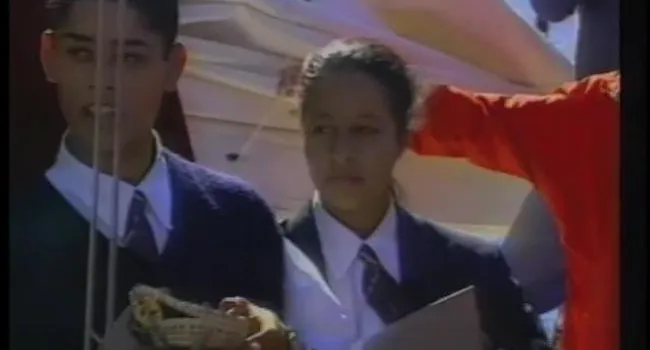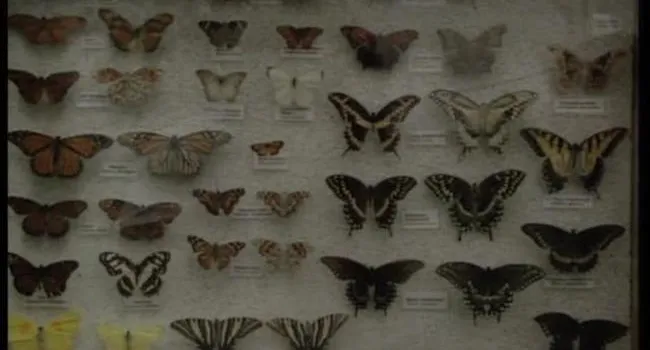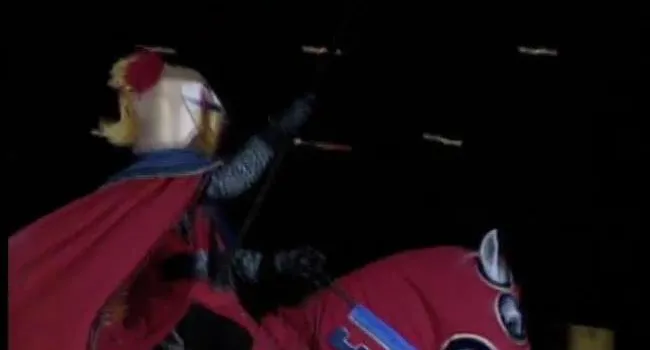The creatures at the South Carolina State Museum are big monsters found in your backyard. Because the bugs are much larger than the actual insects, details, as seen from the perspective of their prey, can be viewed without a microscope. Insects can not only see hundreds or thousands of images with their compound eyes, they can also see in all directions.
Some of the insects covered in this program include the praying mantis, dragonfly, unicorn beetle, and spider. Camouflage, habitat, characteristics, predator/prey relationships, and behaviors are discussed for each species.
A hymenopteran’s nest is a hexagonal structure made by wasps, bees, and other stinging insects. Bugs walk by, moving all six legs. Museum visitors can experiment with this mode of transportation by manipulating a robot. An insect collection shows the size, shape, and diversity of any one species of insect, such as a beetle.
Arachnids are spiders. The brown recluse, also known as the fiddleback spider, is a type of spider found in South Carolina. Black widows are common in South Carolina. There are six to eight different species of the black widow spider. Some have a telltale red hourglass on their abdomen, some have three red stripes, and some have no markings at all. Even though there are differences, all black widows have a bulbous abdomen and are a shiny blue-black color. The tarantula is an arthropod that has fangs that go up and down. There are approximately 500 species of spiders in South Carolina, but the tarantula is not one of them.
Butterflies are also insects, and there are many beautiful varieties in South Carolina. The stages in the life cycle of the butterfly are discussed.
Museum visitors manipulate a mechanical display to explore the wing movements of the dragonfly. The front wings move opposite to the back wings.
Scorpions are also considered insects. They are found in South Carolina from the Midlands region of Columbia to the mountains.
Standards
- Life Science: Animals and Their Environments
- 2.L.5 The student will demonstrate an understanding of how the structures of animals help them survive and grow in their environments.
- 2.L.5A There are many different groups of animals. One way to group animals is by using their physical characteristics. Animals have basic needs that provide for energy, growth, reproduction, and protection. Animals have predictable characteristics at ...
- 2.L.5A.1 Obtain and communicate information to classify animals (such as mammals, birds, amphibians, reptiles, fish, or insects) based on their physical characteristics.
- 2.L.5A.2 Construct explanations for how structures (including structures for seeing, hearing, grasping, protection, locomotion, and obtaining and using resources) of different animals help them survive.
- 2.L.5B Animals (including humans) require air, water, food, and shelter to survive in environments where these needs can be met. There are distinct environments in the world that support different types of animals. Environments can change slowly or qui...
- 2.L.5A There are many different groups of animals. One way to group animals is by using their physical characteristics. Animals have basic needs that provide for energy, growth, reproduction, and protection. Animals have predictable characteristics at ...
- 2.L.5 The student will demonstrate an understanding of how the structures of animals help them survive and grow in their environments.
- Life Science: Characteristics and Growth of Organisms
- 4.L.5 The student will demonstrate an understanding of how the structural characteristics and traits of plants and animals allow them to survive, grow, and reproduce.
- 4.L.5A Scientists have identified and classified many types of plants and animals. Each plant or animal has a unique pattern of growth and development called a life cycle. Some characteristics (traits) that organisms have are inherited and some result ...
- 4.L.5B Plants and animals have physical characteristics that allow them to receive information from the environment. Structural adaptations within groups of plants and animals allow them to better survive and reproduce.
- 4.L.5B.1 Develop and use models to compare how humans and other animals use their senses and sensory organs to detect and respond to signals from the environment.
- 4.L.5B.3 Construct explanations for how structural adaptations (such as methods for defense, locomotion, obtaining resources, or camouflage) allow animals to survive in the environment.
- 4.L.5 The student will demonstrate an understanding of how the structural characteristics and traits of plants and animals allow them to survive, grow, and reproduce.
- Life Science: Interdependent Relationships in Ecosystems
- 5.L.4 The student will demonstrate an understanding of relationships among biotic and abiotic factors within terrestrial and aquatic ecosystems.
- 5.L.4B All organisms need energy to live and grow. Energy is obtained from food. The role an organism serves in an ecosystem can be described by the way in which it gets its energy. Energy is transferred within an ecosystem as organisms produce, consum...
- 5.L.4B.1 Analyze and interpret data to explain how organisms obtain their energy and classify an organisms as producers, consumers (including herbivore, carnivore, and omnivore), or decomposers (such as fungi and bacteria).
- 5.L.4B.2 Develop and use models of food chains and food webs to describe the flow of energy in an ecosystem.
- 5.L.4B.3 Construct explanations for how organisms interact with each other in an ecosystem (including predators and prey, and parasites and hosts).
- 5.L.4B.4 Construct scientific arguments to explain how limiting factors (including food, water, space, and shelter) or a newly introduced organism can affect an ecosystem.
- 5.L.4B All organisms need energy to live and grow. Energy is obtained from food. The role an organism serves in an ecosystem can be described by the way in which it gets its energy. Energy is transferred within an ecosystem as organisms produce, consum...
- 5.L.4 The student will demonstrate an understanding of relationships among biotic and abiotic factors within terrestrial and aquatic ecosystems.
- Life Science: Diversity of Life – Classification and Animals
- 6.L.4 The student will demonstrate an understanding of how scientists classify organisms and how the structures, processes, behaviors, and adaptations of animals allow them to survive.
- 6.L.4A Life is the quality that differentiates living things (organisms) from nonliving objects or those that were once living. All organisms are made up of cells, need food and water, a way to dispose of waste, and an environment in which they can liv...
- 6.L.4B The Animal Kingdom includes a diversity of organisms that have many characteristics in common. Classification of animals is based on structures that function in growth, reproduction, and survival. Animals have both structural and behavioral adap...
- 6.L.4 The student will demonstrate an understanding of how scientists classify organisms and how the structures, processes, behaviors, and adaptations of animals allow them to survive.



































